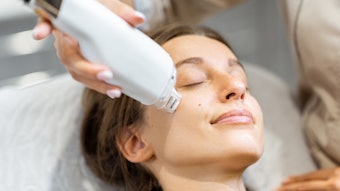
Combining products into one cohesive skin care regimen can be a challenging task; but, when faced with a skin care regimen that includes cosmeceutical and prescription-strength products, the task can become overwhelming. Now that more and more clients are using prescription medications along with their cosmeceutical products, it is necessary for the skin care professional to have a general understanding of the more commonly prescribed topical medications and their fundamental differences. Although skin care professionals should never make prescription recommendations, knowledge of the various medications that are available and how they work within a skin care regimen will allow for a safer and more unified treatment plan.
What’s the difference?
“Cosmeceutical” is a term used to describe topical skin care products that are not drugs, but have more visible efficacy than a typical cosmetic product acquired over the counter. Cosmeceuticals are not governed by the U.S. Food and Drug Administration (FDA); therefore, the manufacturers of these various products cannot make any medical claims. On the contrary, any medication or drug that is physician-prescribed and regulated by the FDA is considered a prescription. The manufacturers of the drug are able to make medical claims, but must provide qualified studies showing the indications of use and possible side effects.
Simply put, prescription medications and cosmeceuticals can be used in combination; however, it is important to not overstimulate the client’s skin when doing so. This is when your knowledge of commonly prescribed medications is paramount to your client’s skin health. The chart Common Prescription Medications summarizes common oral and topical prescription medications, the type of client that might be prescribed this medication, its key ingredients and its mechanism of action.
The intellectually curious client
It’s no secret that clients are becoming more interested in their overall skin health. Virtually any information about a product, a skin condition or a prescription medication is at the fingertips of the client via the Internet. Because of this, it has become increasingly necessary for skin care professionals to give clients concise, valid answers when they inquire about combination therapy. After all, they look to you to care for the health of their skin. Furthermore, clients may already be integrating a prescription medication into their skin care routine. If this is the case, it is in your best interest and that of the client that you have knowledge of the possible interactions between drugs and cosmeceutical products.
Conversely, you may encounter a client who needs medical intervention for a condition that is not treatable within your scope of practice. For example, a client with a moderate-to-severe case of rosacea may need to be prescribed an azelaic acid gel to help control the symptoms. Although you should not suggest any medication in particular to your clients, you certainly can refer them to a physician who can assess their condition and prescribe accordingly. However, it is in the best interest of your client that you are well-versed in the various medications available and how they work alongside cosmeceutical products.
Simultaneous use, substitution and maintenance
When recommending a cosmeceutical-grade skin care regimen to clients who are on prescription medication, it is essential to know which medications they are currently using and those that could potentially cause complications. For example, if a client is already on a prescription-strength benzoyl peroxide (BPO), it would not be recommended to suggest she incorporate another BPO product into her skin care regimen. Since BPO can be topically irritating, a calming cleanser, a daytime moisturizer with a broad-spectrum SPF and a nighttime moisturizer that do not contain high percentages of stimulating ingredients would be most appropriate. The integration of cosmeceuticals with a prescription medication is often referred to as simultaneous use.
Certain skin concerns may not require prescription intervention. A client may have only a mild case of a particular skin condition, or she may be too sensitive for prescription-strength products. Substitution refers to the use of cosmeceuticals instead of prescriptions. For example, an anti-aging client who could potentially be a candidate for topical tretinoin may instead opt to substitute a cosmeceutical product with a low-percentage retinol, which will offer similar results without irritation.
Some prescription medications are not meant for long-term use, such as a 4% hydroquinone. For clients on medications for a fixed amount of time, cosmeceuticals are often an acceptable way to maintain the client’s results. Again, it is crucial to work with the treating physician when implementing a maintenance program since the initial treatment plan may have a predetermined end date. Once that has been established, finding an appropriate cosmeceutical product to take the place of the prescription medication can preserve the client’s results. A prescription-strength hydroquinone is an example of a medication that could be switched to a cosmeceutical once the desired results have been achieved.
The new combination therapy
It is completely acceptable to combine cosmeceutical skin care products with prescription medications, as long as there is no danger of simultaneous use. As clients become more aware of what is available to treat their skin concerns, skin care professionals must also be aware of the options available in order to effectively combine treatment strategies. Although skin care professionals should not recommend prescription products, clients may require medical intervention; in which case, the skin care professional should maintain a general understanding of the various medications prescribed. This knowledge will help to avoid doubling up on the same ingredient, which could lead to overstimulating the client’s skin, and will help to solidify the client-therapist relationship to ensure repeat visits and long-term client compliance.
Jennifer Wild, DO, is board-certified in family practice and since 2004, she has pursued an active interest in esthetics and skin care, including dermal injections, lasers, professional skin care treatments and products. Her vast knowledge in both the medical and esthetic industries has allowed her to excel within the industry as an advanced educator for PCA Skin.











